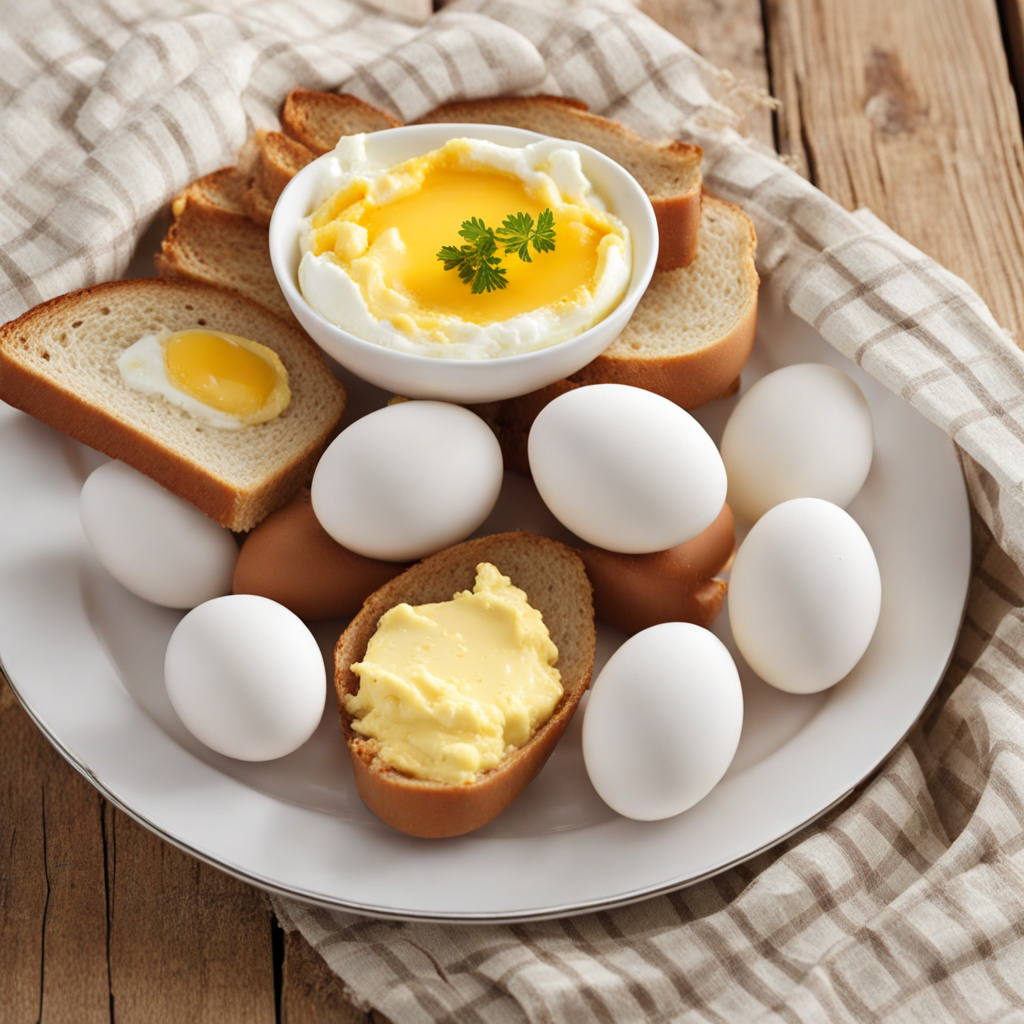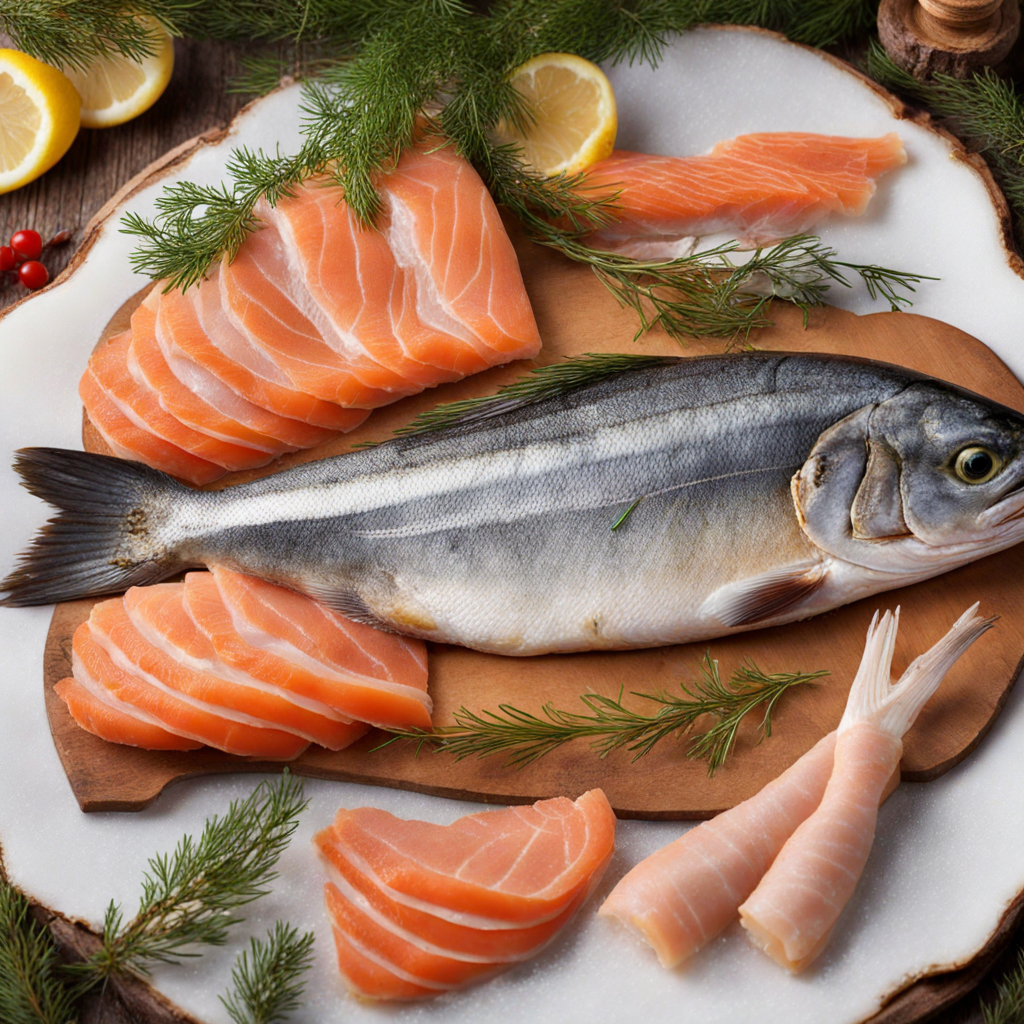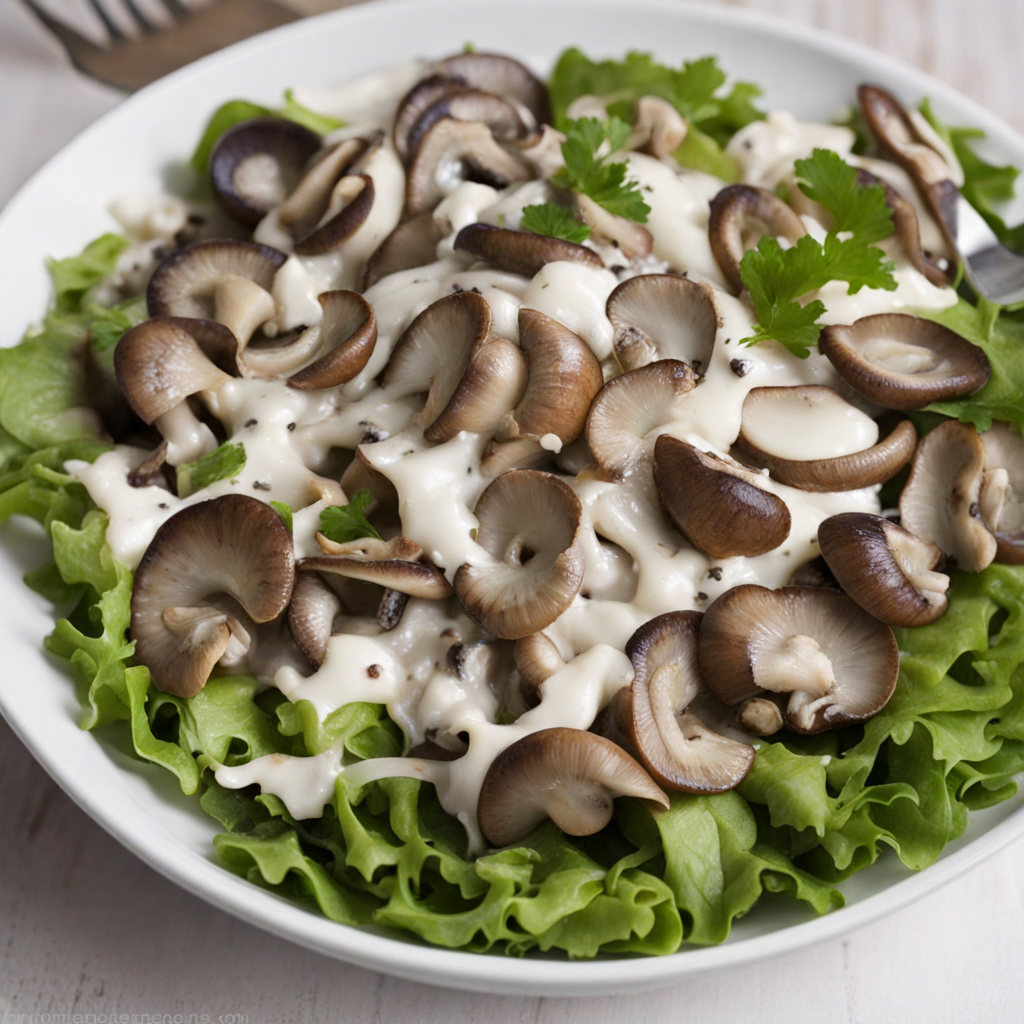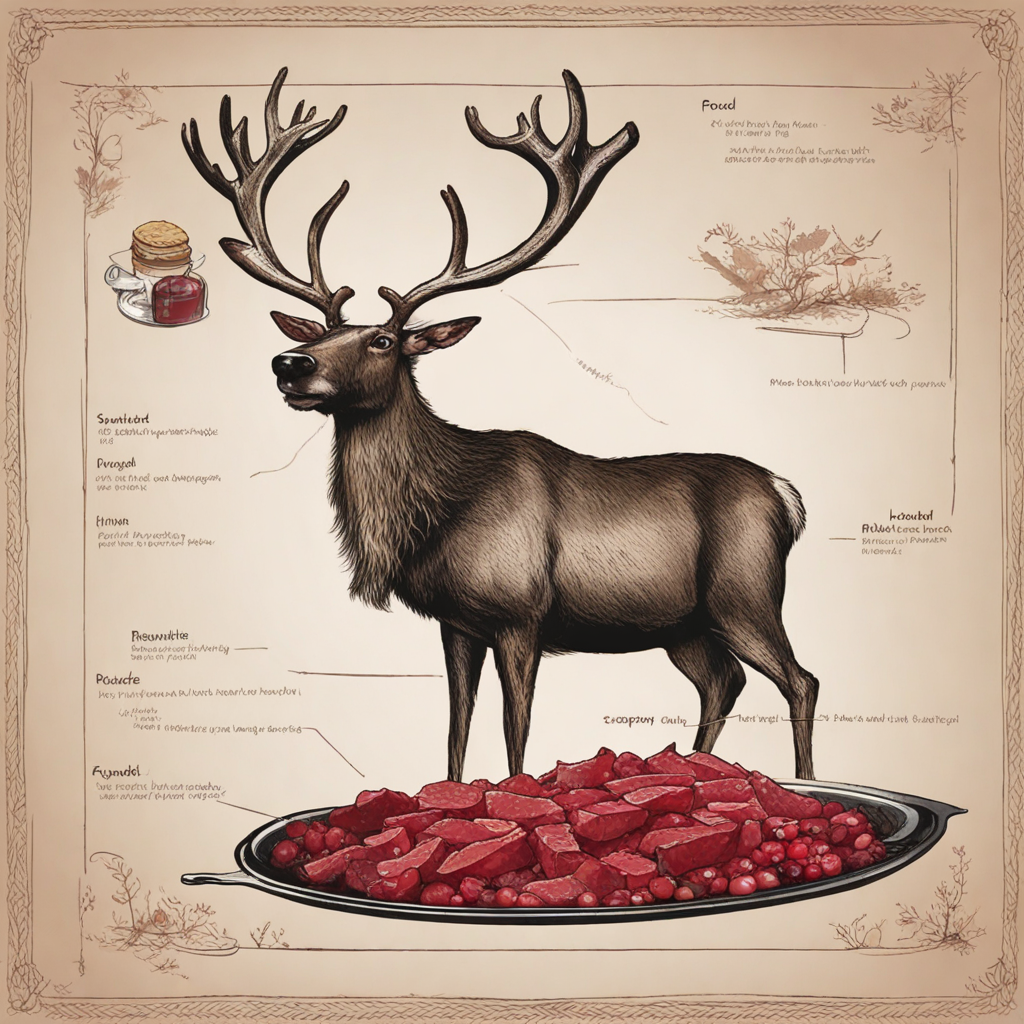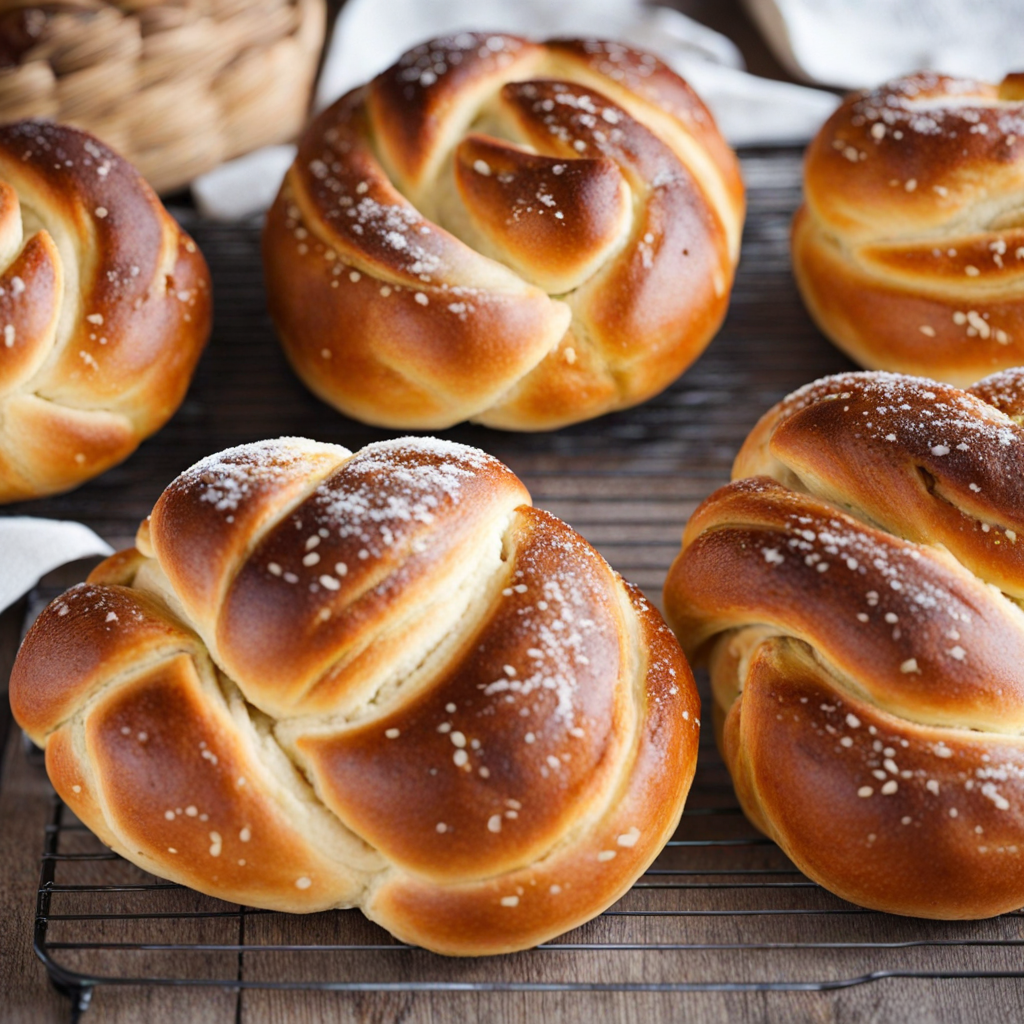Egg Butter
Egg Butter, or "Munavoi" in Finnish, is a delightful spread that embodies the simplicity and richness of Finnish cuisine. This creamy concoction is made primarily from hard-boiled eggs and butter, blended together to create a smooth, velvety texture that’s both indulgent and satisfying. The eggs lend a subtle richness, while the butter adds a luxurious mouthfeel, making it a perfect accompaniment to a variety of breads, from crusty rye to soft white rolls. The flavor profile of Egg Butter is comforting and mildly savory, with the natural taste of eggs shining through, enhanced by a hint of salt. Often, fresh herbs like dill or chives are added to elevate the dish, providing a refreshing contrast and a pop of color. This simple yet flavorful spread is a staple during Finnish breakfast or brunch, where it is enjoyed on open sandwiches, or "smörgås," garnished with pickled cucumbers, radishes, or even slices of smoked salmon for an added touch of sophistication. Egg Butter is not just about taste; it’s also about tradition. In Finland, this dish reflects the values of using fresh, locally-sourced ingredients, and it often graces tables during special occasions, picnics, or casual gatherings. The process of making Egg Butter is straightforward, inviting everyone to participate in its preparation, thus turning it into a cherished family activity. For those looking to explore a new culinary experience, Egg Butter offers a unique combination of flavors and textures that highlight the beauty of Finnish food culture.
How It Became This Dish
The History of Munavoi: Finland's Beloved Egg Butter Origins of Munavoi Munavoi, a quintessential Finnish delicacy, translates to "egg butter" in English. This simple yet delectable spread is made by mixing hard-boiled eggs with butter, often enhanced with seasonings like salt, pepper, and sometimes herbs or onion. Its origins can be traced back to the rural traditions of Finland, where humble ingredients were crafted into nourishing dishes that sustained families during long winters. The practice of combining eggs with butter may have roots in medieval Europe, where eggs were a staple in many diets, especially in the Nordic countries. As the climate in Finland is not as conducive to year-round farming, the preservation of food through methods like salting, drying, and churning became crucial. Eggs, being a rich source of protein, were often paired with the readily available butter derived from dairy farming. This combination not only maximized the nutritional value of meals but also provided a sense of comfort and indulgence. Cultural Significance Munavoi has become more than just a food item; it embodies Finnish culture and tradition. It is commonly served as a spread on rye bread, which is another staple of Finnish cuisine. The pairing of munavoi with rye bread reflects the agricultural practices of the region, where rye flour is often more suited to the cold climate compared to wheat. This dish is frequently found at various gatherings and celebrations, including Easter, where it is enjoyed as part of a festive smorgasbord. The significance of munavoi transcends mere sustenance. It is a dish that evokes a sense of nostalgia and home for many Finns. In a country where food has a strong connection to family, history, and the changing seasons, munavoi often graces the tables of both ordinary households and special occasions. Its simplicity belies its importance as a comfort food, offering warmth and familiarity in an ever-evolving world. Development Over Time As Finland underwent social and economic changes from the late 19th century through the 20th century, so too did the ways in which munavoi was prepared and consumed. The industrialization of food production introduced new techniques and ingredients, albeit often with a nod to traditional methods. In urban settings, the convenience of store-bought butter and pre-packaged ingredients made munavoi accessible to a wider audience, while rural communities continued to prepare it using home-churned butter and fresh eggs from local farms. Post-World War II, Finland experienced significant modernization and globalization. The introduction of new flavors and culinary influences began to alter traditional recipes. While the classic version of munavoi remains popular, variations have emerged that incorporate ingredients such as garlic, dill, or even smoked fish. These adaptations reflect the evolving palates of contemporary Finns, who are increasingly influenced by global cuisines while also cherishing their culinary heritage. In recent years, there has been a resurgence of interest in traditional foods, spurred by the slow food movement and a growing emphasis on local and sustainable ingredients. Munavoi has found its place in this trend, appealing to both young and old who seek to reconnect with their roots. Farmers' markets and artisanal food producers have begun to offer handcrafted versions of munavoi, using organic eggs and local butter to create a product that celebrates the richness of Finnish agricultural heritage. The Modern Munavoi Experience Today, munavoi is not just confined to the breakfast table; it has adapted to modern dining practices. It is used as a filling for sandwiches, a topping for open-faced rye bread sandwiches, or even as a dip for vegetables. Chefs in Finland have started to experiment with munavoi in innovative ways, incorporating it into gourmet dishes that highlight its creamy texture and rich flavor. In the realm of Finnish gastronomy, munavoi has also found a place in gourmet restaurants, where chefs pay homage to traditional flavors while presenting them in contemporary styles. The pairing of munavoi with high-quality ingredients such as artisanal breads or seasonal vegetables showcases how this simple dish can evolve while remaining true to its roots. Conclusion Munavoi is more than just a condiment; it is a reflection of Finnish identity, history, and the deep-rooted connection to the land. From its humble beginnings as a practical solution for rural households to its current status as a beloved staple at both everyday meals and festive occasions, munavoi encapsulates the essence of Finnish cuisine. As Finland continues to navigate the complexities of modernity while holding onto its cultural heritage, munavoi serves as a delicious reminder of the past. It invites both Finns and visitors to appreciate the beauty of simplicity, the joy of shared meals, and the importance of tradition in a rapidly changing world. Whether enjoyed on a quiet morning with a slice of rye bread or at a bustling gathering, munavoi remains a timeless testament to the culinary richness of Finland, cherished across generations.
You may like
Discover local flavors from Finland



